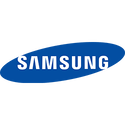
Arm Launches the Cortex-X4, A720 and A520, Immortalis-G715 GPU
Mobile devices touch every aspect of our digital lives. In the palm of your hand is the ability to both create and consume increasingly immersive, AI-accelerated experiences that continue to drive the need for more compute. Arm is at the heart of many of these, bringing unlimited delight, productivity and success to more people than ever. Every year we build foundational platforms designed to meet these increasing compute demands, with a relentless focus on high performance and efficiency. Working closely with our broader ecosystem, we're delivering the performance, efficiency and intelligence needed on every generation of consumer device to expand our digital lifestyles.
Today we are announcing Arm Total Compute Solutions 2023 (TCS23), which will be the platform for mobile computing, offering our best ever premium solution for smartphones. TCS23 delivers a complete package of the latest IP designed and optimized for specific workloads to work seamlessly together as a complete system. This includes a new world-class Arm Immortalis GPU based on our brand-new 5th Generation GPU architecture for ultimate visual experiences, a new cluster of Armv9 CPUs that continue our performance leadership for next-gen artificial intelligence (AI), and new enhancements to deliver more accessible software for the millions of Arm developers.
Today we are announcing Arm Total Compute Solutions 2023 (TCS23), which will be the platform for mobile computing, offering our best ever premium solution for smartphones. TCS23 delivers a complete package of the latest IP designed and optimized for specific workloads to work seamlessly together as a complete system. This includes a new world-class Arm Immortalis GPU based on our brand-new 5th Generation GPU architecture for ultimate visual experiences, a new cluster of Armv9 CPUs that continue our performance leadership for next-gen artificial intelligence (AI), and new enhancements to deliver more accessible software for the millions of Arm developers.






























































